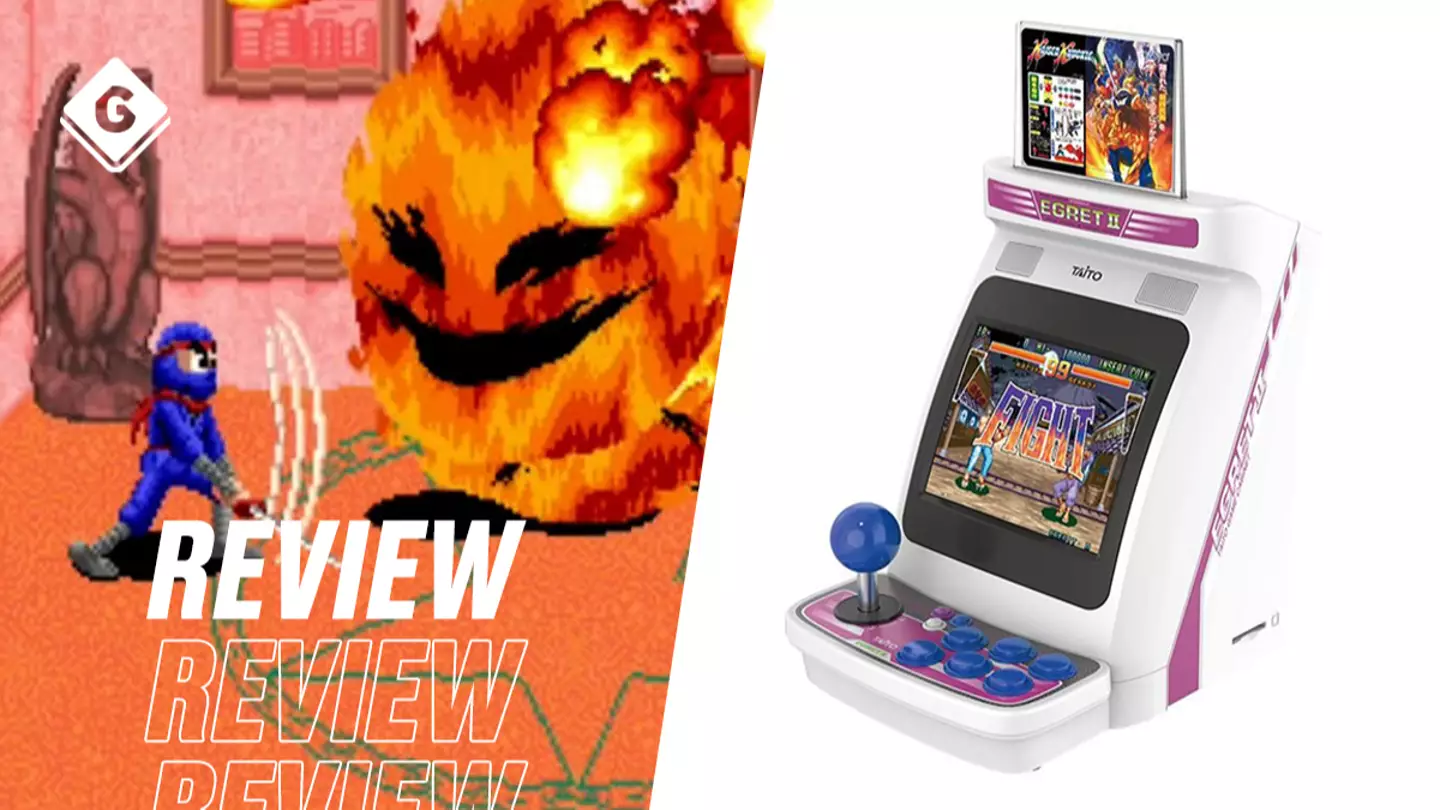
Taito is a name that might not mean a lot to readers who grew up with a PlayStation 3 or Xbox 360 under their TV, but in the 1970s and ‘80s the Japanese developer was a titan in arcades around the world, producing titles including Space Invaders, Bubble Bobble, Rastan Saga, Qix, The NewZealand Story and Elevator Action. Alongside Pac-Man makers Namco, Taito was amongst the first Japanese companies to export its video games to the rest of the world, helping to usher in what soon became known as the golden age of arcade gaming.
All of the above games - and 34 more, for a total of 40 pre-installed titles - are on the new Taito Egret II Mini, a desktop-sized arcade cabinet that sort of replicates the Taito Egret II, a regular-proportioned two-player cab introduced in 1996 and still used in arcades today, across Japan and elsewhere.
Check out the Taito Egret II Mini - Limited Blue Edition in the trailer below…
Walk into a Japanese arcade and there’s a good chance you’ll find several Egret II machines arranged in a row, each unit running a different game, with the information on the title in question displayed on a board above the screen. The Mini version does away with the two-player functionality but keeps the little display board - but to really use it, you have to delve into this system's extras. More on that, in a moment.
Advert
Out of the box - a box I can’t show you in this coverage, as the review unit supplied arrived in preliminary packaging - and the Taito Egret II Mini impresses immediately with its size and weight. This is no hollow, flimsy device, designed more for show than function. The built-in 5-inch screen - which can, brilliantly, be turned around to offer both traditional 4:3 play and a portrait-style display, ideal for vertical shooters (of which there are several included) - is a chunky, satisfyingly clunky piece of tactile tech, which snaps into place with noisy certainty.

The stick and buttons for gameplay all click with appealing volume, and there are three smaller buttons for virtual credit insertion, starting player one, and pausing the game to the menu screen where it can be saved for the next session. Around the back you get a USB-C power socket - there’s no option to use batteries - a 3.5mm headphone socket, HDMI out for TV play, two USB slots for controllers, and the on/off switch. Size wise, the Egret II Mini is a touch larger than SEGA’s Astro City Mini, and makes the Neo Geo Mini look pitifully tiny - unless you have especially large hands, you won’t struggle to play this comfortably.
It’s not only the screen that can be adjusted to suit your game of choice - the stick, too, can be changed from an 8-direction configuration to a 4-way setup using a little switch underneath the unit. Upon starting a game, the screen will display the controls and whether or not it’s best played using an 8- or 4-way stick, alongside a little information on the game’s setting or story (these are arcade titles, none of it gets too deep).
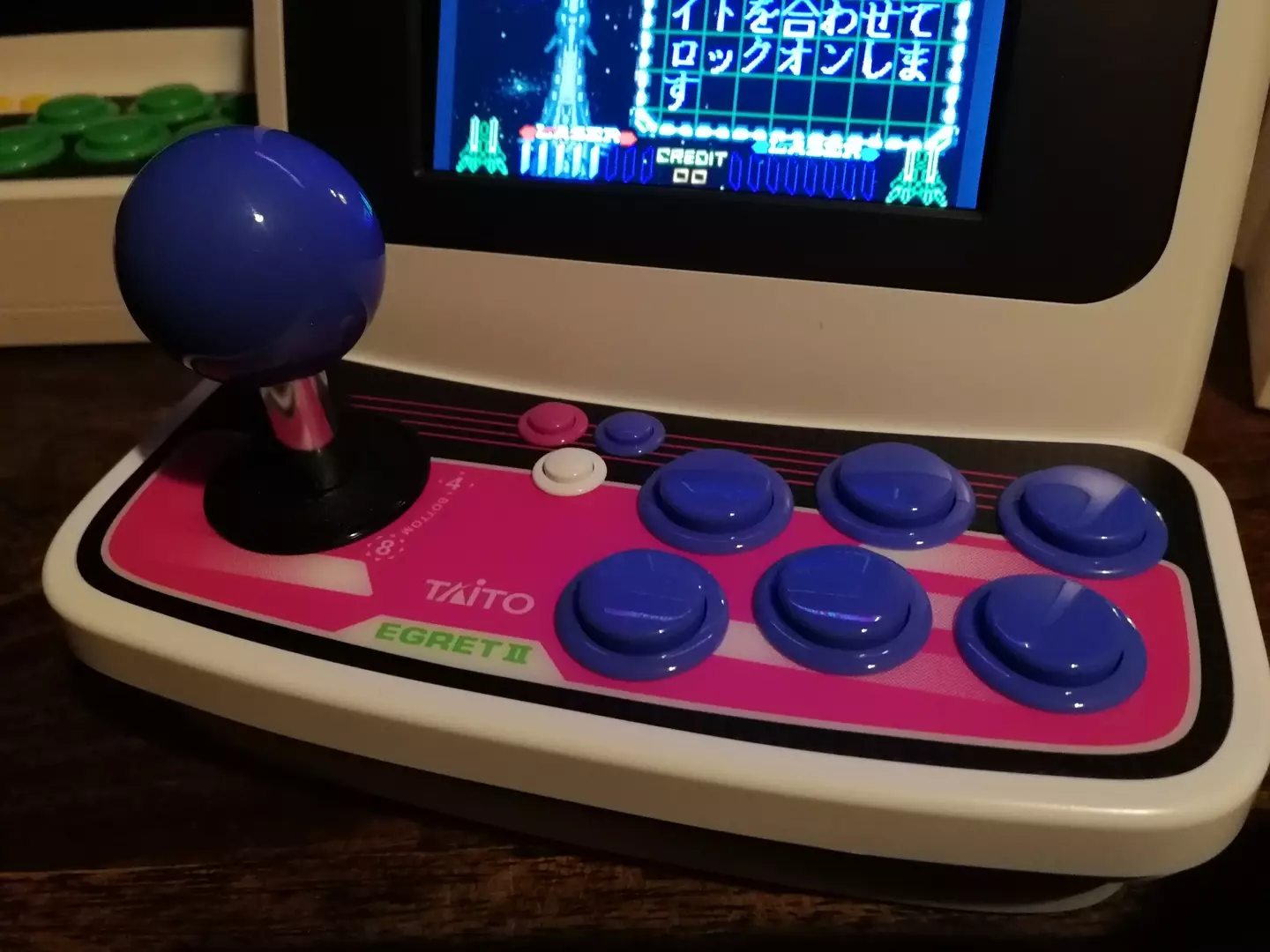
It’s here where you can also restore previously saved games, delete them, and access individual settings for the games - there are options for the number of players/lives per credit, when you gain 1-ups or other power-ups, the game’s difficulty, the length of a contest or match, and more depending on the game in question. The main menu also offers options regarding the unit’s volume and the screen brightness, HDMI-out wallpapers, background music and language selection. You can fiddle with all of these things to really get the most out of the machine and each of the 40 games.
Advert
Speaking of which, the selection here covers a range of genres, from sci-fi shooters and belt-scrolling beat ‘em ups to puzzlers and one-on-one fighters. There’s little here to make younger players’ eyes light up with awe, the most modern inclusion being the 1995 pair of Puzzle Bobble 2X (AKA Bust-A-Move Again) and Dan-Ku-Ga, a previously (officially) unreleased update to the Street Fighter II-like Kaiser Knuckle, a game that was released internationally as Global Champion. But if you grew up gaming in the 1980s and ‘90s, there’s a wealth of delights to dig into - some of which will feel instantly familiar, like the widely ported Bubble Bobble and the iconic Space Invaders, and some of which you’ll be experiencing for the first time.
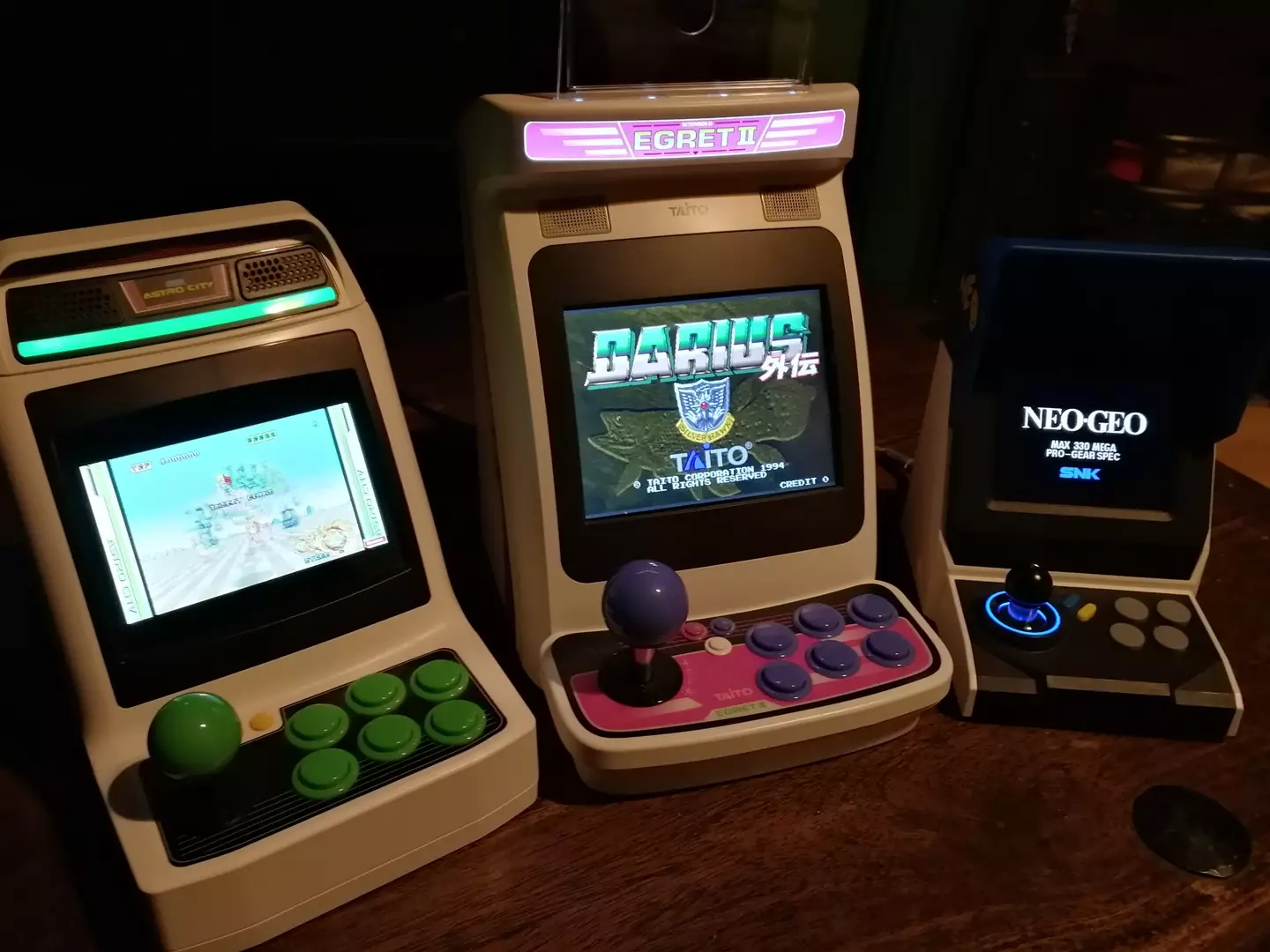
Of those lesser-known games, 1990’s The Ninja Kids (see main picture) is a colourful side-scroller in the Final Fight or Streets of Rage mould, with puppet-like character designs that look like they came out of a kids TV show filtered through the wildest fever dream. In the same genre, and from the very same year, is Runark, which was released internationally as Growl. It’s notable for animal NPCs assisting the player when you free them from their cages or captors. Hat Trick Hero, a football game, is both incredibly difficult to score a goal in due to its superhuman keepers and hilarious as you can punch your opponents, knock the referee on his arse, and even wipe out pitchside photographers with stray shots (trust me: more than not will go wide).
Darius Gaiden is a brilliant horizontal shooter from 1994 that I went into greater detail about in 2020, when it was included in the Darius Cozmic Collection. Metal Black plays in a similar way, whereas Gun Frontier and the late ‘80s likes of Volfied, Tatsujin and Kyukyoku Tiger (AKA Twin Cobra outside of Japan) all need you to flip that screen for optimum viewing pleasure. Many of the earliest titles included on the Egret II Mini, such as Space Invaders, Lunar Rescue, Qix and Lupin III (yes, based on the manga), also use this display layout - but if you absolutely insist on keeping things 4:3, they’ll show up with blank borders on either side. There are some notable absences from the Taito archives - no sign of The Ninja Warriors, Operation Wolf or Chase HQ - but that may be simply due to those arcade bangers not being Egret compatible without some significant adjustments.
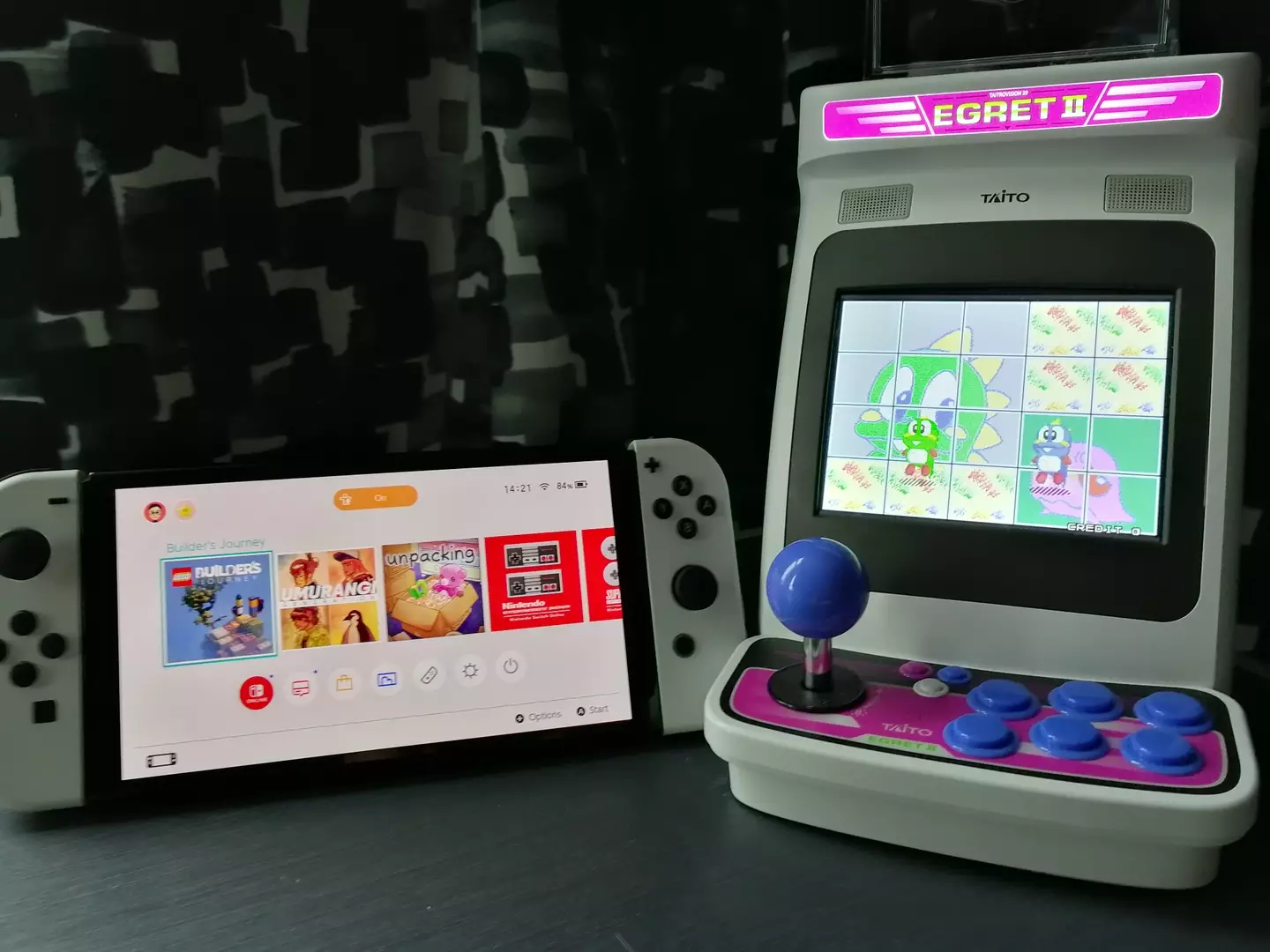
The Egret II Mini is, as noted above, very usable as a desktop device - I even played a few of the simpler games with the unit on my lap. But you can connect it to your TV via an included HDMI lead, using the stick and buttons on the Mini to control the bigger-screen action while the built-in display turns itself off. Alternatively you can buy a control pad, but these aren’t cheap - an official one will set you back a cent shy of 35 euros at retailer Games Rocket, and a larger arcade stick option for TV play comes in at 89.99 euros. I have a number of USB controllers at home, but none that I tried worked with this unit, so it might be that it’s these official options or nothing. Which leads me to my biggest gripe with this otherwise fairly fantastic little machine.
Advert
It’s the price. The Taito Egret II Mini is a niche product for a select crowd, no doubt about that - but with an RRP of 199.99 euros (again at ININ/Games Rocket, the retailer specified in this product’s review materials, and for the ‘Limited Blue Edition’ covered in these words) this is around double the retail cost of Nintendo’s NES or SNES Classic or SEGA’s Mega Drive Mini, and arguably those feature more appealing games (they’re certainly more widely known). A special trackball and paddle controller with an extra 10 games (added via an SD card slot in the unit's side) - including Arkanoid and Cameltry - is 119.99 euros. You can see how this all adds up, if you want to really make the most of this product and everything it’s capable of.
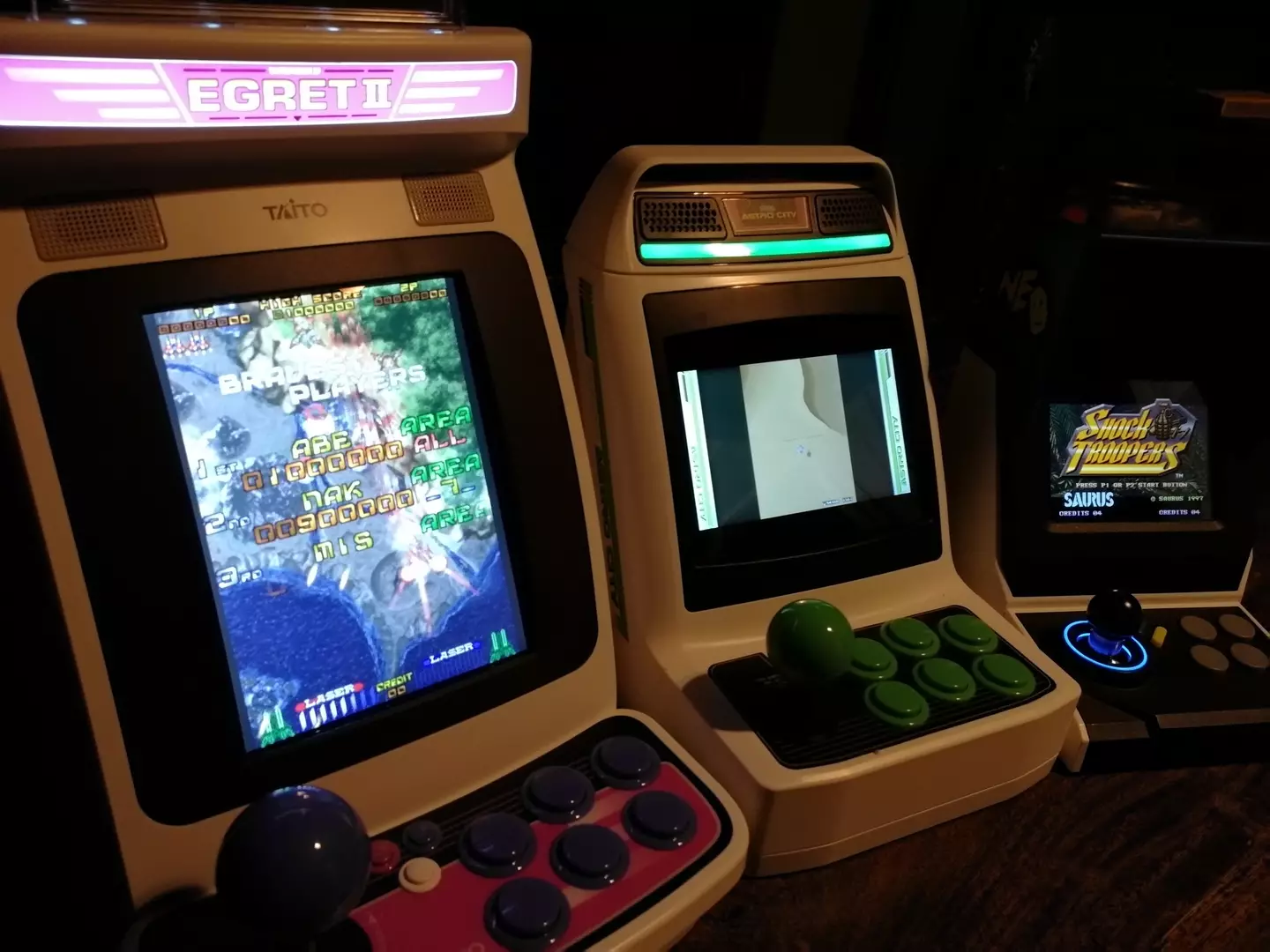
You can opt for bundles, if your pockets are deep enough. Strictly Limited offer the Arcade Cabinet Blue Edition for 319.99 euros - with the unit itself, the paddle/trackball controller, a strategy guide, soundtrack CDs and the little cards to go in that otherwise blank frame above the screen (so that’s how you get them) - and the Game Center Blue Edition for 439.99 euros - which adds the arcade stick, one control pad, flyers, stickers, a ‘game station’ backdrop and a bookmark. It’s great to have so many options available, to build your Egret II Mini experience the way you want it - but bloomin’ heck, none of this is wallet friendly, is it? Without testing any of these add-ons, I can’t comment on their quality or durability - but I can say again that the Egret II Mini itself feels like it’s built to last, and it makes for a great addition to a WFH desk for those all-important brain breaks from an always-online 9-5. It'll be a while before mine goes back in the box (that, again, I can't show you).
Given the expensive nature of the Taito Egret II Mini - SEGA’s (already on the pricey side) Astro City Mini arcade machine is £139.99 in the UK, whereas 199.99 euros converts to just over £165 at the time of writing - it’s not a system I can recommend for everyone. But then, one glance at the games included would tell you that, too. If you’re someone who enjoys mini-consoles and pint-sized arcade cabs, this is amongst the best available in terms of its feel, the user experience, and as a window into a significant period of gaming history, assuming your budget can stretch to everything you need to really bring this Taito arcade experience home. For those curious about gaming history with cash to spare and committed retro collectors alike, this is probably already in your pre-order basket, and you’ll be thrilled when it arrives. Anyone else can move along.
Advert
Pros: the screen is a delight to spin around; build quality is exceptional; more comfortable to use than any comparable alternative
Cons: the regular package covered here feels incomplete (could they not have stretched to info cards as standard?); game selection is incredibly niche; the RRP is a lot
For fans of: Taito history, old-school arcade games, mini-console/retro game collecting
The Taito Egret II Mini ‘Limited Blue Edition’ tested above was provided to GAMINGbible by United Games. Pre-orders can be found at ININ/Games Rocket - Limited Blue Edition Bundle, Paddle/Trackball Expansion Set, Control Panel/Arcade Stick, Control Pad - and Strictly Limited Games - Arcade Cabinet Blue Edition, Game Center Blue Edition.
Featured Image Credit: Taito, United GamesTopics: Retro Gaming, Opinion
